UNDER THE SKIN: AUSSIE RACING CARS – GO KARTS ON STEROIDS

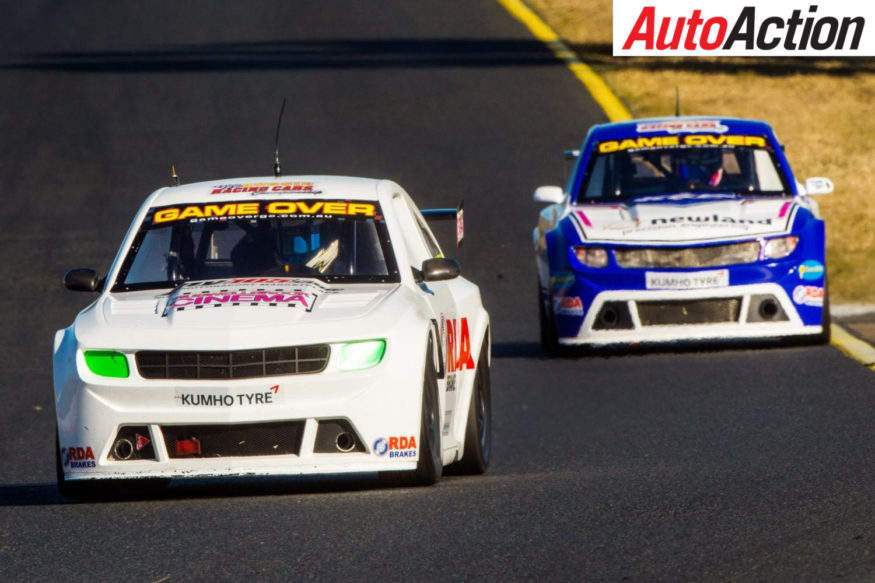
Aussie Racing Cars – Go Karts on Steroids
Aussie Racing Cars have been a staple of the Supercars support paddock for 18 years, but as some classes come and go, these miniature race cars continue to host big grids and provide some of the best racing in the country. Auto Action went to investigate why these cars continue to be popular with competitors and fans.
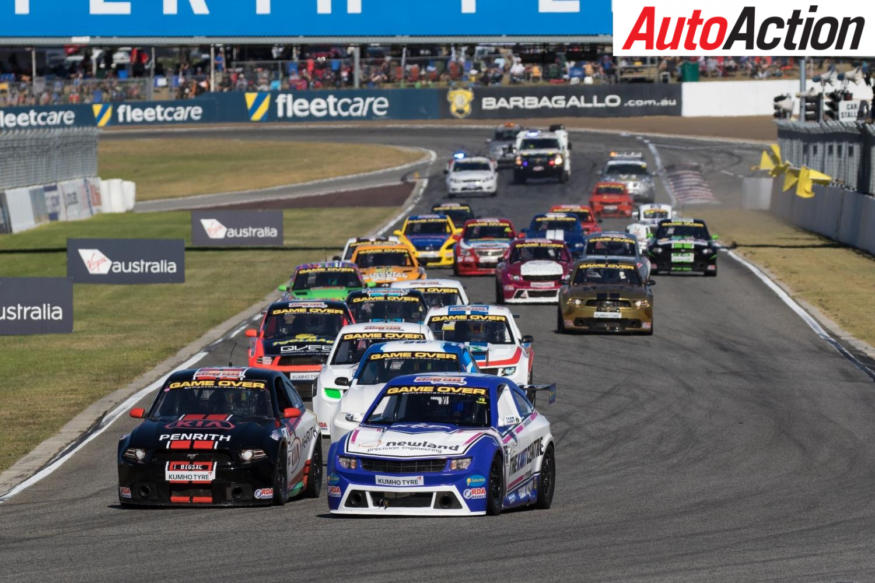
A field of Aussie Racing Cars in Perth
EX-TOURING Car racer Phil Ward initially came up with the idea of Aussie Racing Cars to entertain business men at corporate events. But decided the cars were too good to be restricted to just these and decided to build up a series that has lasted the test of time.
“The categories been operating for 18 years and it started when my old man [Phil Ward] built the chassis and came up with the concept, initially for corporate drive days,” explained 2007 Champion and current Category Manager Brad Ward. “As it turned out, the cars were so good to drive and raced so well he basically turned it into a motor racing category, so that is where the concept really came from.”
The series first ran in 2001 and hasn’t missed a beat since with regular grids in the 30’s while still continuing to support the Supercars program. So why does the series continue to attract competitors year in, year out?
“One of the reasons for the success of the class is that a car that is 15 years old can really be competitive with the current cars subject to a few minor upgrades,” enthused Ward.
“All of the upgrades that we have done over the years can be retro-fitted to the original cars. It means that you can buy an old car, do some upgrades to it and then be competitive with the new cars so it hasn’t obsoleted any of the older cars in the field. This means that someone can own a car, put it in the shed for a couple of years, pull it out and race it, and still be competitive with the current cars. That’s why we have such strong grids because we have such a large pool of cars out there to draw from.”
Another attraction to the class is the flexibility of the car to different circuits, which emphasised when last year’s title winner, James Duckworth described the changes, or lack thereof, that he made to the car at each race meeting.
“We don’t set up the car a great deal coming into a race weekend,” said Duckworth. “We just use a base set up and then tune it from there, so if it’s understeering we tune it up and if it’s oversteering and not coming off the corners we just tune it accordingly.”
“They have coilovers so you can adjust the ride height, but we tend to just leave it and just and focus on the other things that don’t change the characteristics of the car that much.”
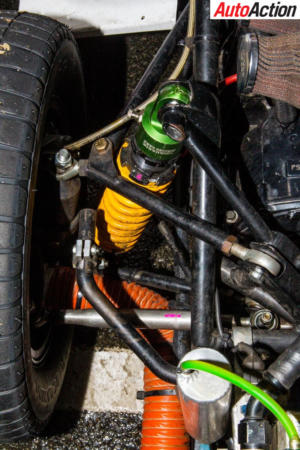
Aussie Racing Cars use coilovers to adjust the ride height
Aussie Racing Cars are a control formula with the amount of changes that are able to be made a at a bare minimum and it works. Racing is close and is very much based on the ability of the driver rather than dollars.
“The chassis and every single component that bolts to it is a control component, but it’s a control category just the same for example Porsche Carrera Cup is or to a certain extent Supercars,” explained Ward.
“Ultimately every component is controlled and it must remain in the original specification as supplied by the manufacturer, which is Aussie Race Cars. You’re not allowed to modify any of the components that bolt onto the car and you’re not allowed to modify the chassis, so it has to be stock standard format supplied by the manufacturer from the day you bought it.
“The objective behind that rule is to make the racing fair and even for everyone and to place the success purely on the driver’s ability as opposed to the driver being able to get an advantage by another driver due to the components on the car.”
The success with this outlook is proven on the racetrack where regularly 15 cars are squabbling for the leading positions and epic slipstream battles are expected. Duckworth knows just how intense these battles can get and that making a mistake hurts more than any other category.
“You don’t know whether you’re going to come out first or you don’t know whether you’re going to win the race, you may end up fifth,” Duckworth laughed.
“It’s just all in the race craft and just adapting to the speed. It’s not the fastest car, it’s just adapting to it and just learning how to drive gearbox car. Other than that they’re just a big go kart on steroids.”
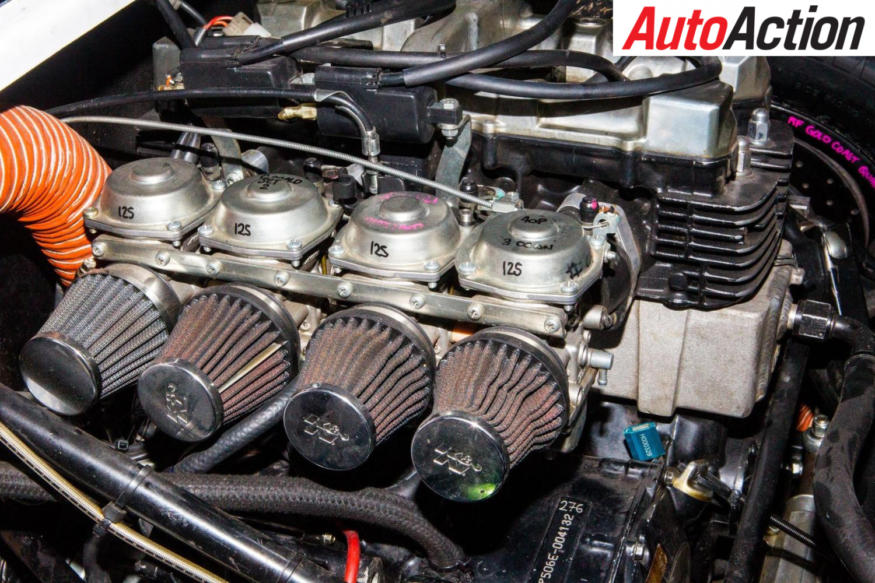
The Yamaha ZJR 1300 used in Aussie Racing Cars
The engine has been a constant through the category since the beginning. The Yamaha ZJR 1300 has been a proven engine since the inception of the class and suits the layout and target market of the car.
“It’s an engine and gearbox unit so it’s one unit. It’s a motorcycle gearbox. The reason we use that engine is because it’s an extremely versatile engine, it’s a torquey motor,” described Ward.
“It’s a 1300cc so it works really well in the car, which weighs about 595kg. The gear ratios are really good for that weight and size car. A good example of that is that we use the same diff ratio in the car at a tight and twisty track like Winton and then we would use the exact same gear ratio and set up at Bathurst.
“That just shows how versatile, how suited to the size car and weight of the car the gearbox and gear ratios are.
Engine building and maintenance is looked after by Craigsted Race Engines in Queensland were each is dyno tested and evaluated before being handed over to the teams as Duckworth explained.
“We send them up to Craigsted because it’s a controlled class, so everything has to be completed in a controlled environment then they just re-dyno test them and send them back to us.
“They are all restricted to 130hp, still a fair amount because we’re talking about a small wheel track, so they have enough power for the size of the vehicle.
“You can use the torque and depending on the driving style you can use second or first and they are very torquey. They’re pretty good put of corners. They top out at 11,000rpm, so all they do is rev, that’s all you can hear. Lucky I wear ear plugs!”
Ward also added that because the car follows a basic principle, it is easy to run the car at a race meeting and if disaster strikes in a mechanical way, it is a considerably short turnaround to replace an engine due to its compact nature.
“They are simple. There is no fuel injection and just carbys so there is no wiring to muck around with, Ward continued. “Everything is reasonably simple on them; it makes it easier to run the car. You can do a whole engine change, I think the record for an engine change is 38 minutes and that is an engine and gearbox. It means the engine is light so you can lift it out by hand, if you have to. It means if you damage an engine or a gearbox at a race meeting literally an hour later you can be back on track.”
Instead of using success ballast, Aussie Racing Cars use a restrictor that is placed in the carburettor of the first two cars that restricts fuel and therefore limits the power. Duckworth is a fan of the idea and would like to see it utilised in other categories instead of lead ballast.
“We don’t have success ballast in this category, we have success restrictors. We get dumped with bigger restrictors, so if you finish in the top two you get a penalty for the next race and you get bigger restrictors that slow you down,” explained Duckworth, who is well experienced in this area.
“I prefer the way that we do it, in saying that the utes and others put ballast in when they should really consider de-tuning the ECU, but with this we get success restrictors and it saves us because we’re so light and we don’t have enough power for adding success ballast. For this we’ll lose a couple of tenths, but it’s the price you pay for running in the top two.”

Inside an Aussie Race Car
Duckworth jumped into Aussie Racing Cars straight from junior karting and found it a great introductory to using a gearbox for the first time. The motorcycle gearbox made it easy to learn, but a new gearbox maybe on the way.
“It’s all in-built; it’s sequential, so straight up and down gears,” Duckworth told Auto Action. “It’s not the hardest thing to adapt to, but you just have to be careful because it’s just a learning thing, you just have to learn how to use the gearbox, but once you get it, it’s pretty simple.”
“They are talking about going to paddleshift, but the way they have it now is good because when you’re going into corners one handed. I actually wouldn’t want to change that.”
Ward provided further insight into the decision, which will be one not taking lightly as it will be the biggest change since the introduction of the class.
“That’s just a development program, we have no plans to introduce that at the moment and it would need several more years in development before we could move forward with anything like that,” confirmed Ward.
“At this stage no it’s not going to be introduced. Until we progress down the track and we’re able to complete the development work on it.”
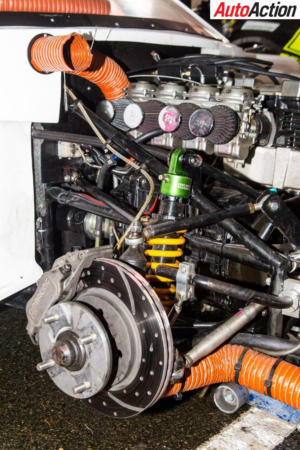
The front brake and suspension package on an Aussie Racing Car
That’s not to say the class hasn’t had updates over the last 18 years, but smartly the changes have been adapted to keep the older cars on the circuit.
“Over the year’s we have done a several upgrades,” emphasised Ward. “We upgraded the rear diff, manufactured our own diff housing, billet axles, we’ve put new AP brakes on the front, we’ve manufactured billet uprights for the front, billet steering rack, all stuff that we’ve improved the reliability of those parts, but they can all be retro-fitted to the existing cars.”
“All the cars are still eligible for the series, I think we’ve built 117 cars in total and that would include a replacement car built to replace a written off car. There are not necessarily 117 of them kicking around in sheds.”
If you are after a new car, Ward can help you out. He has cars ready to go straight off the showroom floor. And if he sells out a new car can be built in a relative short time. All Aussie Racing Cars are assembled by the category at its factory, with the chassis being just one of the components to be built in-house.
“You can get a car from us within a week. We have stock of completed cars ready to go on the showroom floor,” said Ward.
“There’s about 100 hours that go into a build of a car. The chassis and some of the componentry is built in house. The rest of the stuff we have a network of suppliers just like any car manufacturer would that produce the components.
“We do all the assembly in-house, limited production in house through obtaining parts from our network of suppliers. But all of the components, regardless if they come from a supplier or built in house, is designed to a specific ARC specification, there is very limited stuff on the whole car that is an off the shelf item, it’s all cut and made for the Aussie Race Cars.”
Although it is a control class a variety of fibreglass bodyshells give the category variety. Inspired by the US Legends cars the first bodies were a choice between a ’44 Ford and FJ Holden, since then it has expanded to include V8 Supercar style AU Falcons and VY Commodores, Toyota Aurions, Nissan Altimas, Euro GT’s and the latest Chevrolet Camaros and Ford Mustangs.

Duckworth’s Camaro bodied Aussie Racing Car
Duckworth runs a Camaro and finds the fibreglass body easy to maintain and repair.
“The bonnet and the boot are clip on and the doors, but you have to have a mould of the shell. They’re pretty easy to fix up if you damage them. We mainly do it in-house to repair the damage, if you do smack up a bonnet it does take its toll.”
Aussie Racing Cars, much like Carrera Cup, have a category service truck travel to each round, which supplies spare parts for competitors. This helps reduces costs in the category and is easily the cheapest of the supports that consistently feature on the Supercars bill.
“The whole objective of this class at the top level, a major national level like Supercars events is to make it super easy for the competitor,” Ward continued. “Not only is it easier for them to source the parts, but they don’t have to hold an inventory of spare parts because we support the category with a transporter full of spare parts for every event.
“It’s completely feasible for a team to buy a car and turn up to an event without owning a single spare part because if they need anything at the event they can obtain it from ARC at the track. It makes it more affordable that you don’t have to invest money for an inventory of spare parts.”
“Approximately, it would be easily be up around $100,000,” Duckworth estimated. “That’s the budget you have to run to be successful in it, but in saying that it’s a lot cheaper than Super2 where you looking at around half a million. A cheaper budget, but still the same circuit time and for the majority of rounds, in bigger fields.”
What type of car do you get for your $100,000 dollars? According to Duckworth it’s a car that the challenges the driver to find a balance on how they push the car, but when that point is found they are satisfying car to drive.
“Driving these cars is being on the edge the whole time, it’s a knife edge. If you under drive them, they don’t perform and if you over drive them you go too far, if you hit it just right, it rewards you so well. It’s just hard finding that sweet spot.”
Aussie Racing Car Tech Specs
| Engine | 1.3 litre twin-cam water cooled Yamaha engine |
| 4 Valves per cylinder | |
| PWR radiator and oil cooler | |
| 135bhp, 11500rpm | |
| Gearbox | Integral 5-speed dog engagement |
| Sequential gear change | |
| Chassis / cabin | Tubular space-frame and cockpit with integral driver roll-cage |
| Electronic dash programmed to ARC specifications with shift light, tacho, water temp and lap timer | |
| Race seat with 5 point harness | |
| Quick-release steering wheel | |
| Suspension | Front – Coil over race logic monotube shocks fully adjustable rose jointed wishbones |
| Ultra fast rack and pinion | |
| Rear – Live axle | |
| Coil over shocks, parallel trailing arms, panhard rod | |
| Brakes | 4 wheel RDA disc with – Full bias adjustment with balance bar, ARC Spec, AP manufactured billet alloy four pot caliper with hard anodized alloy pistons and high temperature square cut seals. |
| braided lines | |
| Wheels and Tyres | Team Dynamics ARC spec race wheel 13 x 5.5 |
| Kumho V700 semi slick competition tyre | |
| Body Styles | Mustang |
| Camaro | |
| Euro GT | |
| Nissan Altima | |
| Toyota Aurion | |
| Holden Cruze | |
| Ford Falcon | |
| Dimensions | Length: 3.0m |
| Width: 1.35m | |
| Height: 1.05m | |
| Weight: 510kg | |
| Top speed 230KPH |
By HEATH McALPINE
Article originally published in Issue 1722 of Auto Action.
For our latest Under The Skin feature pick up the current issue of Auto Action Magazine, on sale now. In the meantime follow us on social media Facebook, Twitter, Instagram or sign up for our weekly email newsletter for all the latest updates.


